- What is Matricaria?
- Growing in the Garden
- Types of Matricaria
- Planting and Care
- Common Uses
- Conclusion
- Planting and Care Tips
- 1. Choosing the right location
- 2. Soil preparation
- 3. Planting
- 4. Watering
- 5. Fertilizing
- 6. Pruning and deadheading
- 7. Pest and disease control
- 8. Winter care
- Soil Requirements
- Species
- Matricaria recutita
- Description
- Cultivation
- Uses
- Harvesting and Preservation
- Precautions
- Matricaria discoidea
- Description
- Growth and Cultivation
- Uses
- Conclusion
- Varieties
- Matricaria recutita ‘German Chamomile’
- Characteristics
- Growing Conditions
- Uses
- Cultivars
- Conclusion
- Matricaria discoidea ‘Pineapple Weed’
- Appearance
- Cultivation
- Uses
- Conclusion
- Questions and Answers:
- What is Matricaria?
- How is Matricaria grown in the garden?
- What are the different species of Matricaria?
- Are there any varieties of Matricaria?
- How long does it take for Matricaria to bloom?
- Videos: What to do when ONIONS BOLT: Growing in the Garden
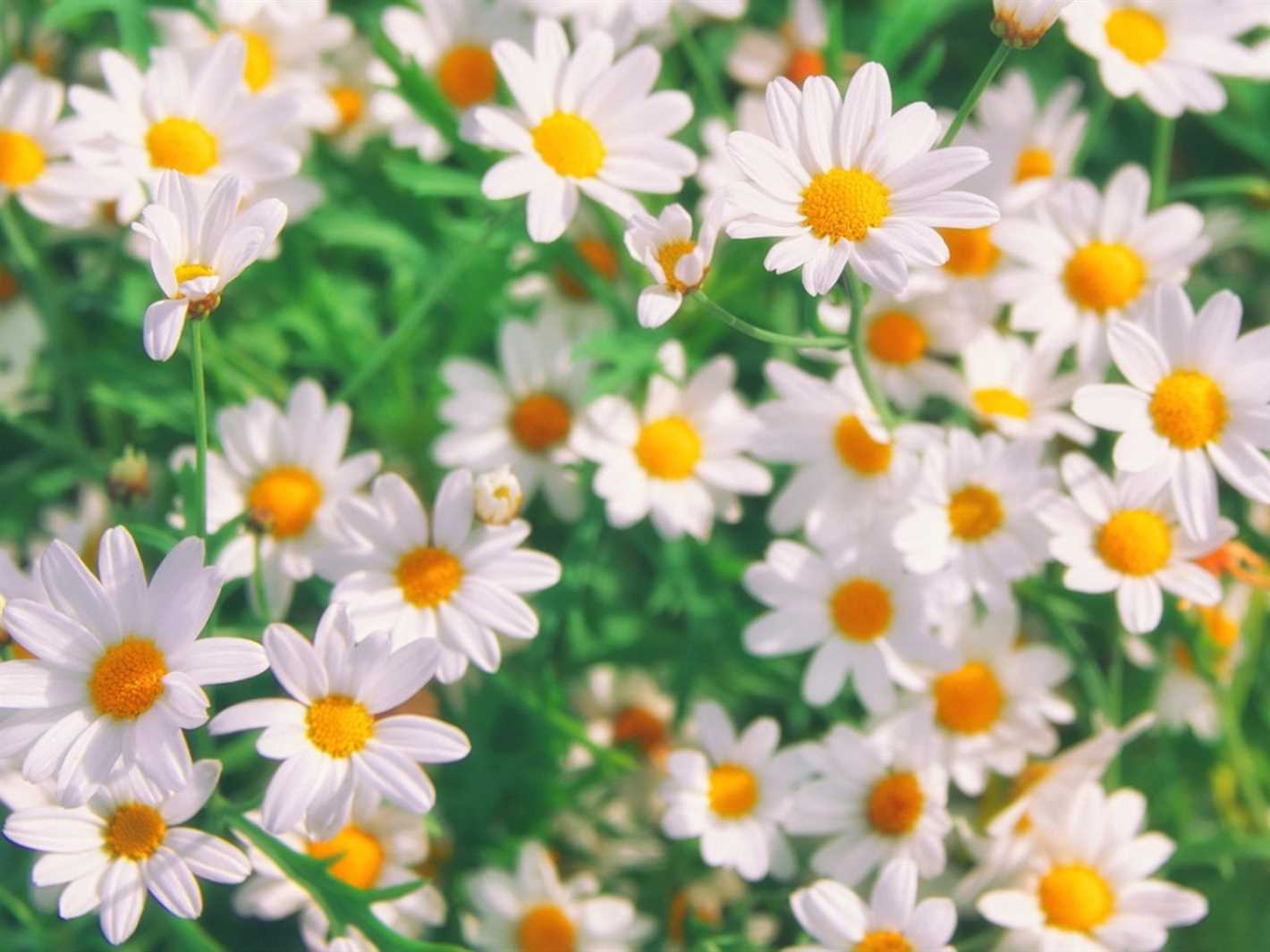
Matricaria is a genus of flowering plants that belong to the daisy family, Asteraceae. These plants are commonly known as chamomile and are well known for their delicate and aromatic flowers. Matricaria is native to Europe and Western Asia, but it is now widely cultivated in gardens around the world.
The most common species of Matricaria is Matricaria chamomilla, also known as German chamomile or wild chamomile. German chamomile has been used for centuries in traditional medicine for its calming and soothing properties. It is also a popular ingredient in teas and natural remedies for its beneficial effects on digestion and sleep.
In addition to German chamomile, there are several other species and varieties of Matricaria that can be grown in the garden. Matricaria recutita, also known as Roman chamomile, is another common variety with similar medicinal properties. It has a more creeping habit and can be used as a ground cover or in between paving stones.
Other species of Matricaria include Matricaria discoidea, commonly known as pineapple weed, and Matricaria maritima, known as sea chamomile or false chamomile. These species are often considered weeds but can still add a touch of beauty to a wildflower garden.
In conclusion, Matricaria is a versatile and beautiful addition to any garden. Whether you choose to grow the common German chamomile or explore the different species and varieties, these plants will bring a sense of tranquility and natural beauty to your outdoor space.
What is Matricaria?
Matricaria is a genus of flowering plants in the aster family Asteraceae. It is commonly known as chamomile or wild chamomile. The name “matricaria” is derived from the Latin word “matrix,” meaning womb, due to its historical use in treating women’s health issues.
There are several species of matricaria, but the most well-known and widely cultivated is Matricaria chamomilla, also known as German chamomile or scented mayweed. It is native to Europe and Western Asia and has been used for centuries for its medicinal and therapeutic properties.
Matricaria chamomilla is especially prized for its fragrant flowers, which have a strong apple-like scent. The flowers are white with yellow centers and bloom during the summer months. They are commonly used to make herbal teas, essential oils, and other natural remedies.
Chamomile has a long history of use for a variety of health conditions. It is known for its calming and soothing properties, making it popular for promoting relaxation and relieving stress. Chamomile tea is often consumed before bedtime to help with sleep and relaxation.
In addition to its sedative effects, chamomile also has anti-inflammatory, antibacterial, and antioxidant properties. It has been used to treat digestive disorders, such as indigestion, bloating, and stomachaches. It may also be beneficial for skin conditions, such as eczema and dermatitis.
Overall, matricaria chamomilla is a versatile and beneficial plant that can be grown in the garden for its beauty and used for its many health benefits. Whether enjoyed as a soothing tea or used in aromatherapy, chamomile is a beloved herb with a long history of traditional use.
Growing in the Garden
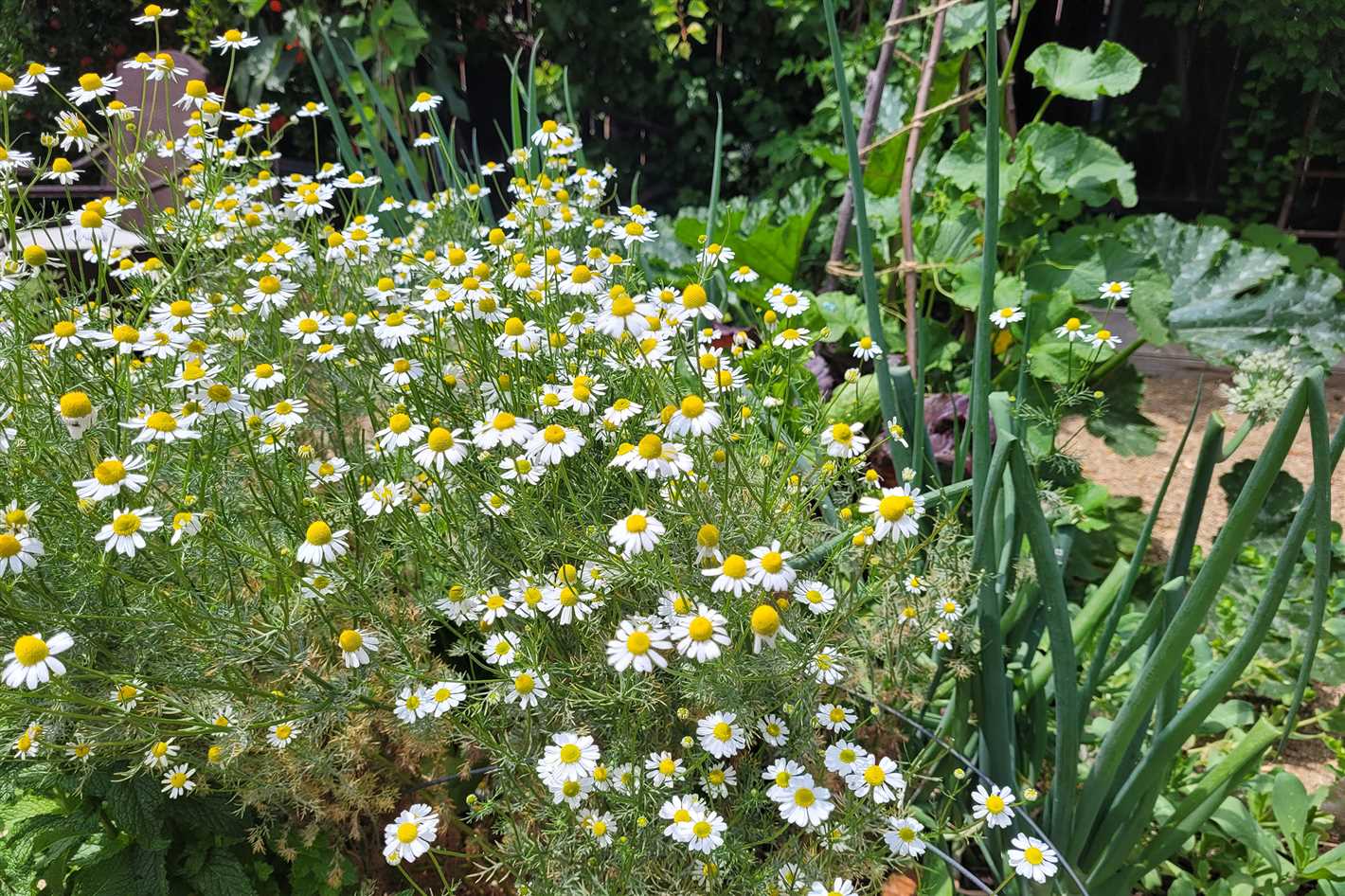

Matricaria, also known as Feverfew or Dog Fennel, is a versatile plant that can be grown in a variety of garden settings. Whether you have a small backyard garden, a balcony container garden, or a large farm, there is a matricaria species or variety that will suit your needs.
Types of Matricaria
There are several species and varieties of matricaria to choose from, each with its unique characteristics. Some popular types include:
- Matricaria chamomilla: This is the most common species of matricaria and is often used for its medicinal properties. It produces small, white daisy-like flowers.
- Matricaria recutita: Also known as German chamomile, this variety is popular for its aromatic flowers and is commonly used in tea.
- Matricaria discoidea: This species is commonly known as Pineappleweed due to its pineapple-like fragrance.
Planting and Care
Matricaria is a hardy plant that is easy to grow, making it a great choice for beginner gardeners. Here are some tips for planting and caring for matricaria:
- Choose a well-draining location with full sun or partial shade.
- Prepare the soil by removing any weeds and adding compost or organic matter.
- Sow the seeds or transplant the seedlings according to the specific variety’s instructions.
- Water regularly, keeping the soil moist but not waterlogged.
- Prune or deadhead the flowers to encourage new growth.
Common Uses
Matricaria has a variety of uses in the garden. Some common ways to utilize matricaria in your garden include:
- Herbal tea: The flowers of matricaria can be dried and used to make a calming herbal tea.
- Insect repellent: Matricaria is known to repel certain insects, making it a natural pest control option.
- Companion planting: Matricaria can be planted near vegetables and herbs to attract beneficial insects and deter pests.
- Ground cover: Some matricaria varieties have a spreading habit and can be used as a ground cover in garden beds.
Conclusion
Matricaria is a versatile and easy-to-grow plant that can enhance any garden. With its beautiful flowers, medicinal properties, and numerous uses, it is a great addition to any garden setting. Consider adding matricaria to your garden and enjoy its many benefits.
Planting and Care Tips
1. Choosing the right location
Matricaria plants thrive in full sun to light shade. Choose a location that receives at least 6-8 hours of direct sunlight each day. Ideally, the soil should be well-draining and rich in organic matter. Avoid areas with heavy clay or compacted soil.
2. Soil preparation
Before planting, prepare the soil by loosening it with a garden fork or tiller. Remove any weeds or debris and incorporate compost or well-rotted manure to improve fertility and drainage. Matricaria prefers a slightly acidic to neutral pH (6.0-7.0).
3. Planting
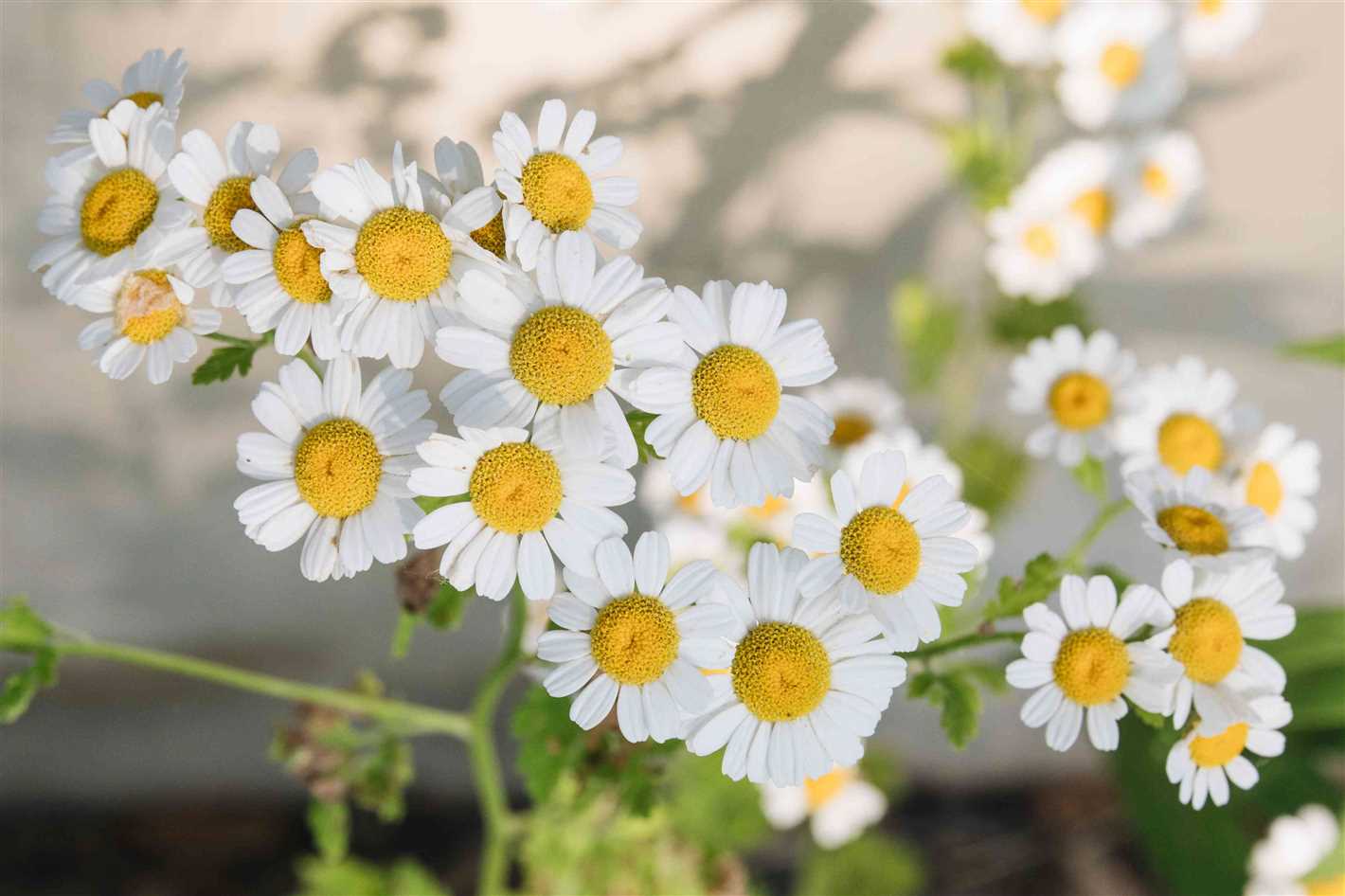

Plant matricaria seeds or seedlings after the last frost date in your area. Sow seeds directly into the prepared soil, spacing them about 6-12 inches apart. If using seedlings, gently transplant them into the ground, making sure to cover the roots and firm the soil around the base.
4. Watering
Keep the soil evenly moist but not overly saturated. Water the plants 1-2 times per week, depending on the weather and soil conditions. Avoid overhead watering, as wet foliage can promote disease. Consider using a soaker hose or drip irrigation system to deliver water directly to the roots.
5. Fertilizing
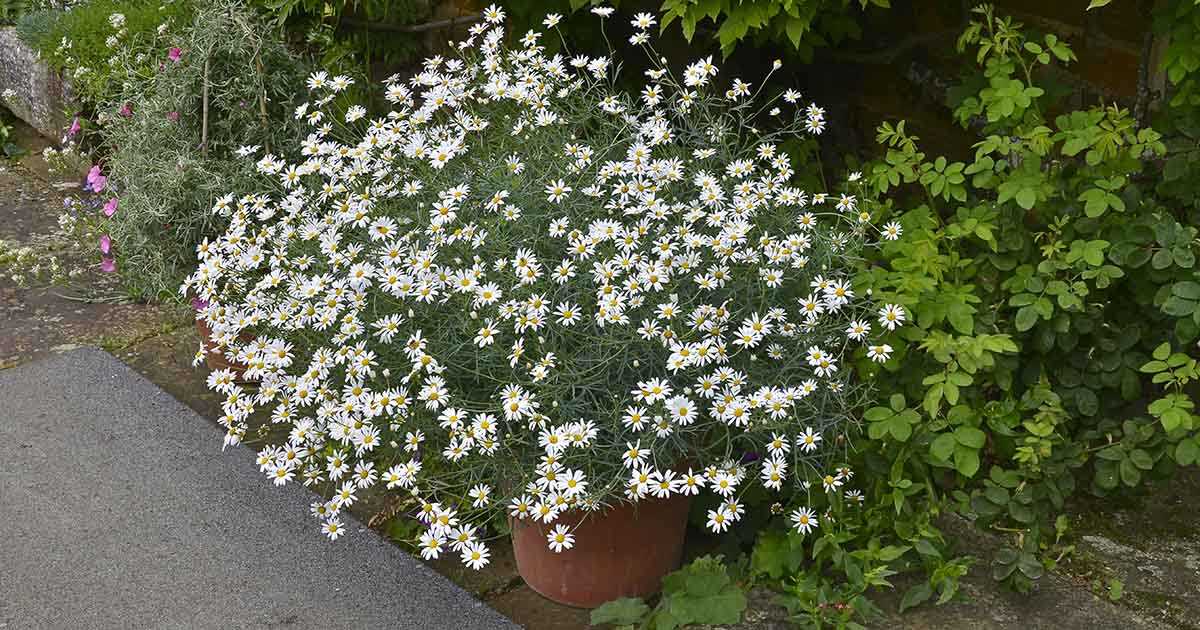

Apply a balanced, slow-release fertilizer to the soil around the plants in early spring, following the manufacturer’s instructions. Repeat the application every 4-6 weeks throughout the growing season. Avoid over-fertilizing, as it can promote excessive foliage growth at the expense of flower production.
6. Pruning and deadheading
To encourage continuous blooming, deadhead the spent flowers regularly. Trim back any leggy or overgrown stems to promote bushier growth. Cut the plants back to about half their height in late summer or early fall to prevent self-seeding and ensure a more compact shape.
7. Pest and disease control


Matricaria plants are generally resistant to most pests and diseases. However, keep an eye out for aphids, spider mites, and powdery mildew. If necessary, treat affected plants with insecticidal soap or a suitable fungicide following the product instructions.
8. Winter care
In colder climates, matricaria plants may not survive the winter. In late fall, mulch around the base of the plants with a layer of organic material, such as straw or wood chips, to protect the roots from freezing temperatures. Consider bringing potted matricaria indoors or propagating new plants from seeds or cuttings for the following year.
| Aspect | Soil | Watering | Fertilizing | Pruning | Pest and Disease Control | Winter Care |
|---|---|---|---|---|---|---|
| Full sun to light shade | Well-draining, rich in organic matter | Evenly moist, avoid overwatering | Slow-release fertilizer every 4-6 weeks | Deadhead regularly, trim back leggy stems | Watch for aphids, spider mites, and powdery mildew | Mulch to protect roots from freezing temperatures |
Soil Requirements
Matricaria plants thrive in well-drained soil with a pH range of 6.0-7.5. They prefer a soil that is rich in organic matter and has good fertility. The soil should also be loamy or sandy, allowing for good drainage.
It is important to prepare the soil before planting matricaria. Start by removing any weeds or grass from the area where you plan to plant. Loosen the soil using a garden fork or tiller, breaking up any clumps and removing any rocks or debris.
Adding organic matter to the soil can improve its structure and fertility. This can be done by incorporating compost or well-rotted manure into the soil before planting. Organic matter helps to retain moisture in the soil, as well as providing essential nutrients for the plants.
Before planting, it is recommended to perform a soil test to determine its pH level and nutrient content. This will help identify any deficiencies or imbalances that may need to be corrected. Based on the results of the soil test, you can amend the soil with the appropriate fertilizers or soil conditioners.
Matricaria plants have shallow roots, so it is important to avoid compacting the soil around them. After planting, gently firm the soil around the base of the plants to ensure good soil-to-root contact, but be careful not to press too hard.
To maintain optimal soil conditions for matricaria, regular watering is essential. The plants require consistently moist soil, but be careful not to overwater, as this can lead to root rot or other problems. Mulching around the plants can help to conserve moisture in the soil.
In conclusion, matricaria plants require well-drained soil with a pH range of 6.0-7.5. They prefer soil that is rich in organic matter and has good fertility. Proper soil preparation, including removing weeds and incorporating organic matter, is important for successful matricaria cultivation. Monitoring and maintaining soil moisture levels will also contribute to the health and productivity of the plants.
Species
Matricaria belongs to the family Asteraceae and is a genus of flowering plants that includes several different species. The most common species are:
- Matricaria chamomilla: Also known as German chamomile or wild chamomile, this species is native to Europe and Western Asia. It is widely cultivated for its medicinal properties and is commonly used in herbal teas and as an ingredient in skincare products.
- Matricaria recutita: Also known as Roman chamomile or English chamomile, this species is native to Western Europe and North Africa. It is a perennial plant with small, daisy-like flowers and a sweet, apple-like scent. Roman chamomile is often used in aromatherapy and as a flavoring in food and drinks.
- Matricaria discoidea: Also known as pineapple weed or wild chamomile, this species is native to North America. It has small, dome-shaped flowers that resemble pineapples and a strong, fruity scent. Pineapple weed is often used in herbal medicine and as a natural insect repellent.
- Matricaria inodora: Also known as scentless chamomile or wild chamomile, this species is native to Europe and Western Asia. It has white, daisy-like flowers and a mild, slightly bitter scent. Scentless chamomile is often used as a ground cover plant and is considered a weed in some areas.
These species of Matricaria have similar characteristics and can often be used interchangeably for their medicinal, aromatic, and culinary purposes. However, it’s important to note that each species may have slightly different chemical compositions and concentrations of active compounds.
When growing Matricaria in the garden, it’s important to choose the species that best suits your needs and local growing conditions. Some species may be better suited for specific climates or soil types, so it’s always a good idea to research and consult with local gardening experts before planting.
Matricaria recutita
Matricaria recutita, also known as German chamomile, is a popular herbaceous plant that belongs to the Asteraceae family. It is native to Europe and Western Asia and is widely cultivated for its medicinal properties. German chamomile has a long history of use in herbal medicine and is known for its calming and soothing effects.
Description
German chamomile is an annual plant that grows up to 1 to 2 feet in height. It has slender, branching stems and feathery, fern-like leaves that are divided into threadlike segments. The plant produces small, daisy-like flowers with white petals and yellow centers. The flowers have a pleasant apple-like fragrance.
Cultivation
- Soil: German chamomile prefers well-drained, moderately fertile soil.
- Light: It thrives in full sun to partial shade.
- Watering: The plant is moderately drought-tolerant but should be watered regularly during dry periods.
- Propagation: German chamomile can be easily grown from seeds, which should be sown directly into the garden soil in early spring.
Uses
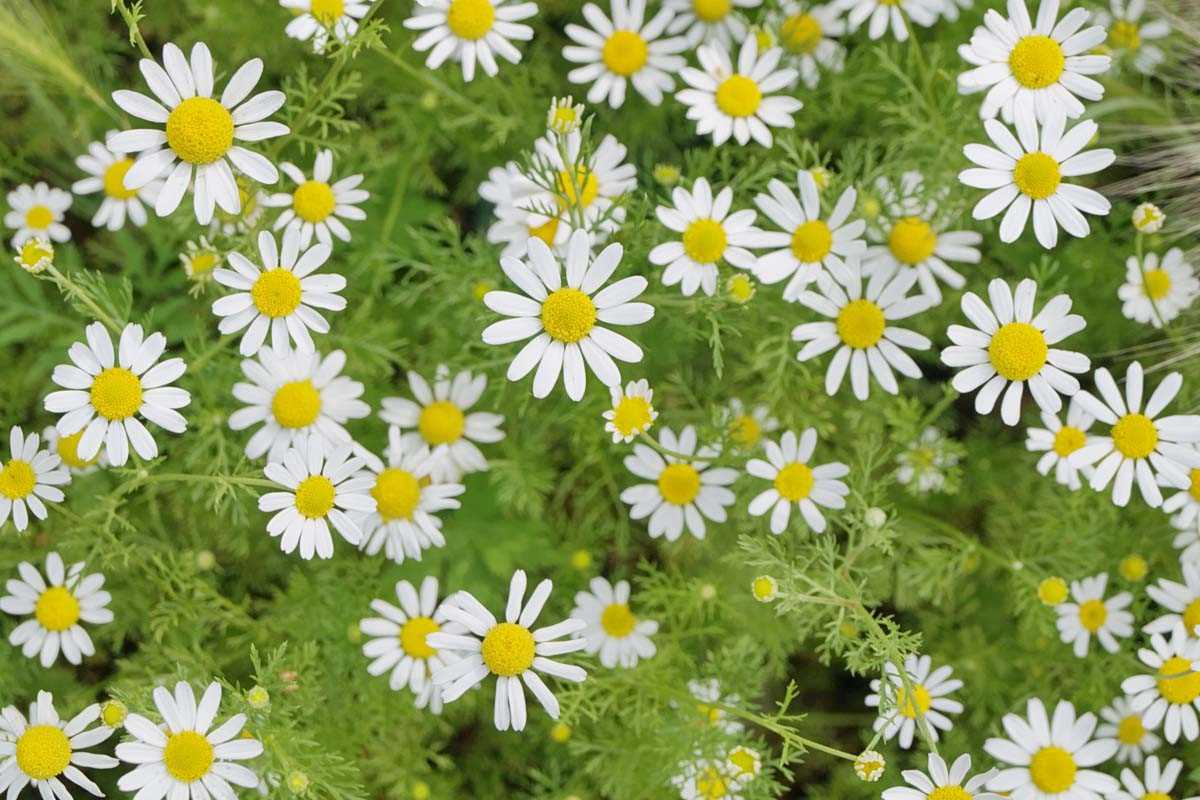

German chamomile is primarily valued for its medicinal properties. The flowers and the essential oil extracted from them are used in various herbal preparations. Some of the common uses of German chamomile include:
- Treating digestive issues such as indigestion, bloating, and stomach cramps.
- Relieving anxiety and promoting relaxation.
- Alleviating skin conditions like eczema, rashes, and irritations.
- Reducing inflammation and soothing minor wounds and burns.
Harvesting and Preservation
The flowers of German chamomile can be harvested when they are fully open but before they start to fade. They should be harvested in the morning, once the dew has dried. The flowers can be used fresh or dried for later use. To dry the flowers, spread them out in a single layer on a clean, dry surface and store them in an airtight container.
Precautions
While German chamomile is generally considered safe, some people may experience allergic reactions to the plant. It is always recommended to consult a healthcare professional before using German chamomile for any medicinal purposes, particularly if you have any existing medical conditions or are taking medications.
| Common Name | German chamomile |
|---|---|
| Scientific Name | Matricaria recutita |
| Family | Asteraceae |
| Native to | Europe and Western Asia |
Matricaria discoidea
Matricaria discoidea, also known as pineapple weed, is a small annual plant in the Matricaria genus. It is native to North America and can be found growing in temperate regions throughout the continent.
Description
Pineapple weed grows low to the ground and forms dense mats of foliage. The plant has finely divided, feathery leaves that are light green in color. It produces clusters of small, cone-shaped flower heads that resemble miniature pineapples, hence the common name.
Growth and Cultivation
Pineapple weed thrives in disturbed areas and can often be found growing along roadsides, in gardens, and in other areas with compacted soil. It is tolerant of a wide range of soil types and can even grow in poor, sandy soils.
The plant is often considered a weed due to its ability to spread rapidly and compete with other plants for resources. However, some gardeners may choose to cultivate pineapple weed for its unique appearance and pleasant fragrance.
Uses
The flowers and leaves of pineapple weed can be used to make a calming herbal tea. The tea is believed to have mild sedative properties and can help to relieve stress and anxiety. Additionally, the plant has been used in traditional medicine to treat various ailments, including digestive issues and skin irritations.
Conclusion
Matricaria discoidea, or pineapple weed, is a hardy and versatile plant that can be found growing in a variety of habitats. Whether considered a weed or cultivated for its medicinal properties, this plant is a unique and interesting addition to any garden.
Varieties
There are several varieties of Matricaria that can be grown in the garden. Here are some popular ones:
- Matricaria chamomilla – also known as German chamomile or wild chamomile, this variety is widely cultivated for its medicinal properties. It has small, white flowers and a strong aroma.
- Matricaria discoidea – commonly known as pineappleweed, this variety has small, dome-shaped flower heads that resemble pineapples. It is often used in herbal teas and as a natural insect repellent.
- Matricaria maritima – also known as sea mayweed, this variety is native to coastal regions and has yellow flowers. It is often found growing in sandy soil.
- Matricaria recutita – commonly known as Roman or German chamomile, this variety is similar to Matricaria chamomilla but has larger flowers that are more heavily scented. It is often used in herbal remedies and cosmetics.
Each variety of Matricaria has its own unique characteristics and uses, making them a versatile addition to any garden.
Matricaria recutita ‘German Chamomile’
Matricaria recutita, commonly known as German Chamomile, is a flowering plant belonging to the Asteraceae family. It is native to Europe and Western Asia and is widely cultivated for its medicinal and cosmetic properties. German Chamomile is an aromatic herb with small, daisy-like flowers and feathery leaves. It reaches a height of about 30-60 cm and bears white flowers with yellow centers.
Characteristics
Plant Type: Herbaceous perennial
Height: 30-60 cm
Flower Color: White
Flowering Season: Late spring to early summer
Growing Conditions
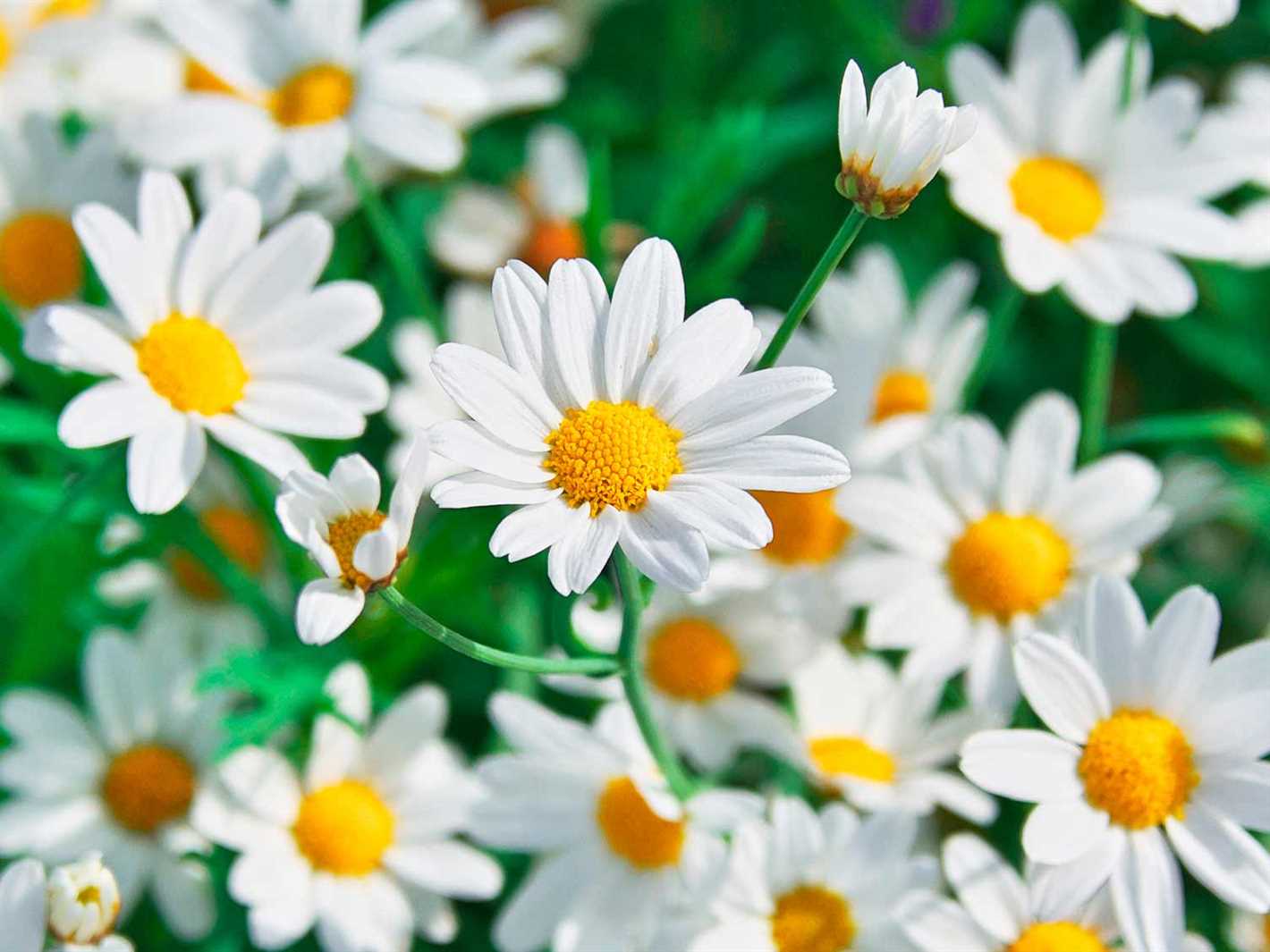

German Chamomile is easy to grow and thrives in well-drained soil with full sun to partial shade. It prefers a slightly acidic to neutral soil pH. This herbaceous perennial can tolerate drought conditions but performs best with regular watering. It is also tolerant of light frosts.
It is recommended to sow German Chamomile seeds directly in the garden. The seeds should be sown in early spring or fall, about 1 cm deep. Thin the seedlings to a spacing of 15-30 cm to allow for proper growth. German Chamomile can self-seed and spread easily, so be mindful of its invasive nature when planting it in the garden.
Uses
German Chamomile has a long history of use in traditional medicine, particularly for its anti-inflammatory and calming properties. The flowers are commonly dried and used to make chamomile tea, which is known for its relaxing effects and potential health benefits. German Chamomile extract is also used in cosmetic products, such as shampoos, soaps, and lotions, for its soothing and skin-nourishing properties.
Cultivars
There are several cultivars of Matricaria recutita available, offering variations in flower color and plant size. Some popular cultivars include:
- ‘Bodegold’: This cultivar has bright yellow flowers and compact growth.
- ‘Zloty Lan’: This cultivar features golden-yellow flowers and a strong aroma.
- ‘Pioneer’: This cultivar is known for its early flowering and vigorous growth.
Conclusion
Matricaria recutita ‘German Chamomile’ is a versatile and useful herb for gardeners and herbal enthusiasts. Its beautiful flowers, easy cultivation, and medicinal properties make it a valuable addition to any garden or herbal remedy collection.
Matricaria discoidea ‘Pineapple Weed’
The Matricaria discoidea, commonly known as ‘Pineapple Weed’, is a species of flowering plant in the Asteraceae family. It is native to North America and can be found growing in various regions across the continent, including the United States, Canada, and Mexico.
Appearance
The Pineapple Weed is a low-growing annual plant that reaches a height of about 10-20 cm. It has small, inconspicuous flowers that are yellow-green in color and resemble miniature pineapples, hence the name. The leaves are finely dissected and have a feathery appearance.
Cultivation
Pineapple Weed is known for its ability to thrive in disturbed areas, such as gardens, roadsides, and waste areas. It prefers well-drained soil and full sun, but it can also tolerate partial shade. This plant is not frost-tolerant and grows best in temperate climates.
Propagation of Pineapple Weed can be achieved through seed sowing. The seeds should be sown in spring or early summer, directly into the desired location. They should be lightly covered with soil and kept moist until germination, which usually occurs within a few weeks.
Uses
In traditional medicine, Pineapple Weed has been used to treat various ailments, such as digestive issues, menstrual cramps, and skin conditions. The flowers and leaves of the plant can be brewed into a tea or used topically as a poultice.
In addition to its medicinal uses, Pineapple Weed can also be used as a culinary herb. The leaves and flowers have a pleasant, pineapple-like aroma and can be used to flavor teas, salads, desserts, and even alcoholic beverages.
Conclusion
Matricaria discoidea ‘Pineapple Weed’ is a versatile and useful plant that can be grown in gardens for its aesthetic appeal, medicinal properties, and culinary uses. Its distinctive pineapple-like fragrance and unique appearance make it a valuable addition to any garden.
Questions and Answers:
What is Matricaria?
Matricaria is a genus of flowering plants in the daisy family. It is commonly known as chamomile.
How is Matricaria grown in the garden?
Matricaria can be grown in the garden by sowing seeds directly in the soil. It prefers well-drained soil and full sun. Regular watering is required to keep the soil moist.
What are the different species of Matricaria?
There are several species of Matricaria, including Matricaria recutita, Matricaria inodora, and Matricaria discoidea. Matricaria recutita is the most commonly cultivated species for its flowers, which are used to make chamomile tea.
Are there any varieties of Matricaria?
Yes, there are different varieties of Matricaria. Some popular varieties include ‘German chamomile’ and ‘Roman chamomile’. These varieties differ in their growth habits and the fragrances of their flowers.
How long does it take for Matricaria to bloom?
Matricaria plants typically start blooming within 8 to 10 weeks after sowing the seeds. However, the exact time may vary depending on the growing conditions and the species or variety of Matricaria.







